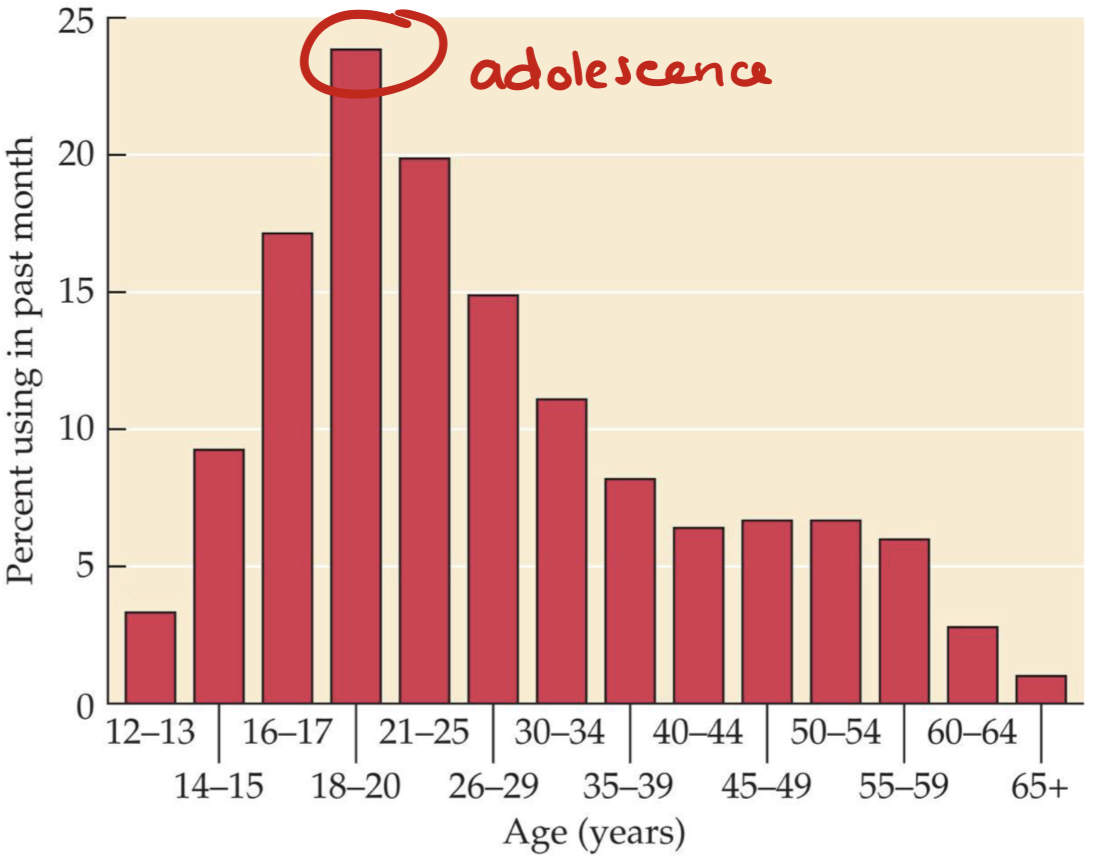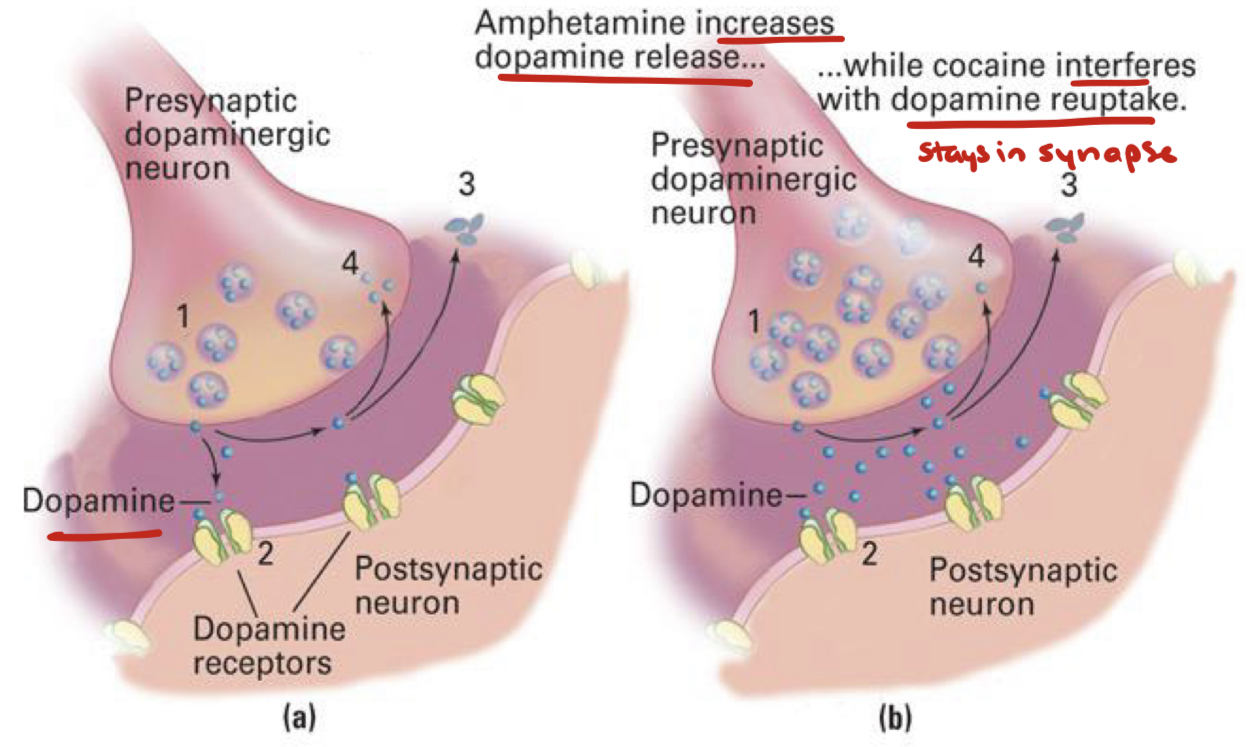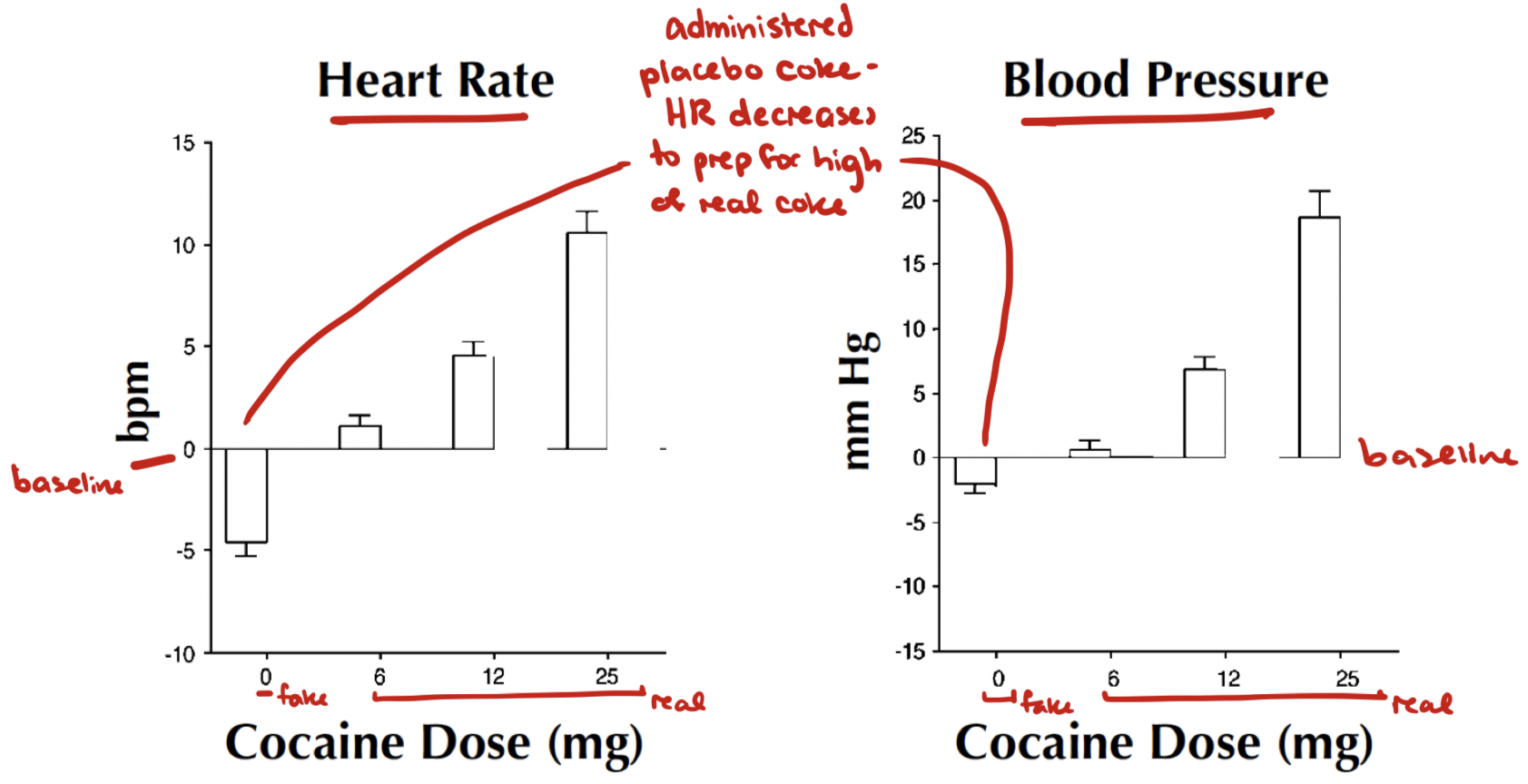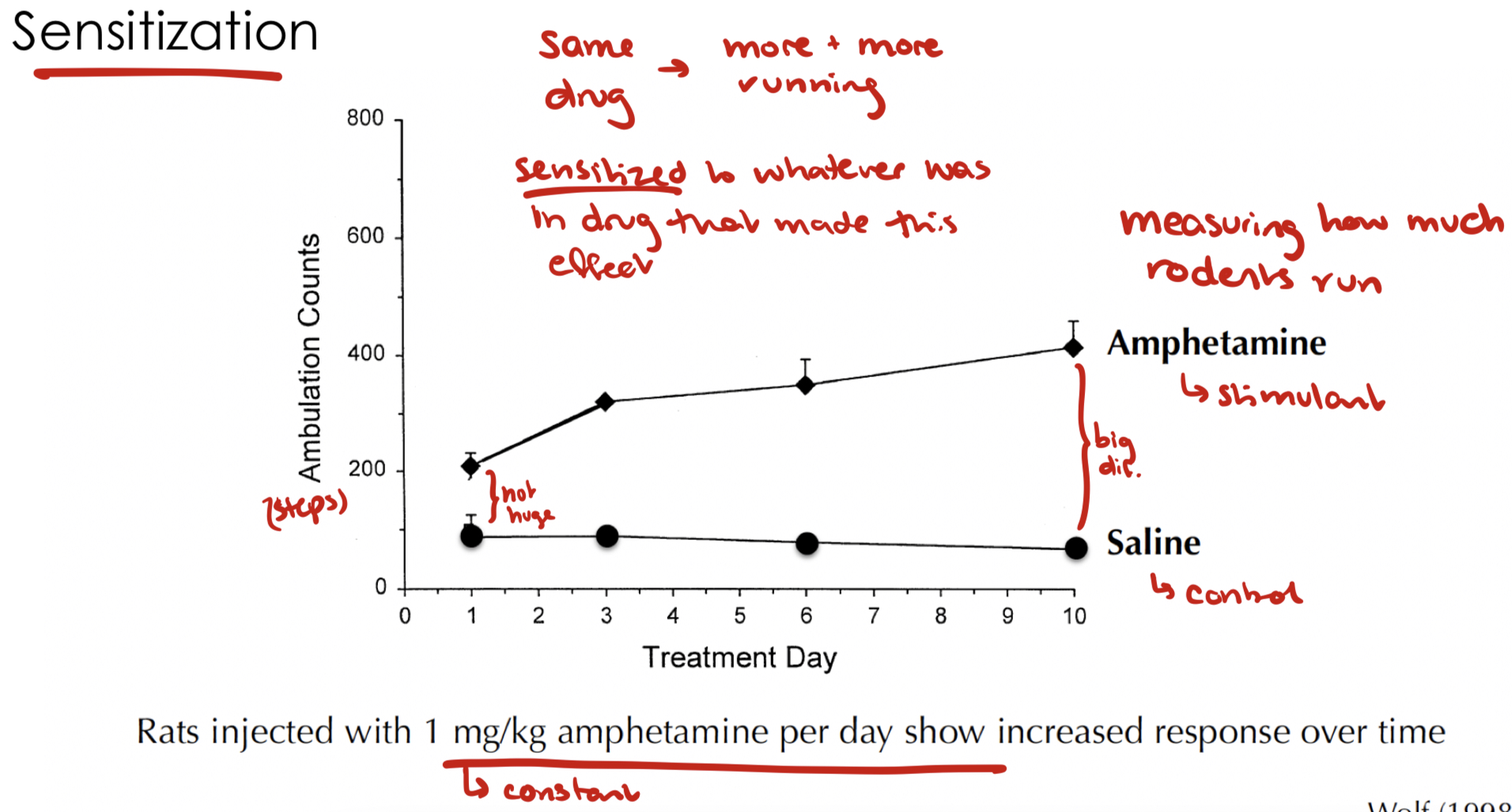PSY260 Lecture 12: Addiction
1/20
There's no tags or description
Looks like no tags are added yet.
Name | Mastery | Learn | Test | Matching | Spaced |
|---|
No study sessions yet.
21 Terms
Addiction
A chronic medical condition involving complex interactions among brain circuits, genetics, the environment, and an individual’s life experiences
People with addiction use substances or engage in behaviours that become compulsive and often continue despite harmful consequences
What is considered addictive?
Some illicit drugs
Heroin, cocaine, amphetamines
Some legal drugs
Caffeine, nicotine, marijuana
Many behaviours
Shopping, stealing, skin/hair picking, social media use, gambling, exercise, work
Anything involving dopamine
There is not a clear line between what is/isn’t addictive
Drug Abuse: Terminology
Language of drug abuse tends to frame addiction as the user’s fault
Reality: societal norms play a huge role in what gets called abuse
Drug abuse is not the same as addiction
More related to dose and legality
Line is a bit blurred and differs for different substances
Ex. smoking a single joint is abuse in countries where it’s illegal
Ex. using a prescription drug for something it wasn’t prescribed for is also “abuse“
What Factors Lead to Addiction?
Almost every addiction is a result of an individual trying to cope with something
Trauma
Attachment wounds
Social isolation
Neurotransmitter dysregulation
Ex. in ADHD → lack of dopamine
Pain management
Emotional/physical pain
Especially opioids
Using Drugs: Development
Development is a large factor
Late adolescents (~17-22) are the largest group of drug users
Reasons
PFC is still developing
Inhibitory control not fully developed
Not all executive functions are online
Ventral striatum is dominant → reward-seeking

Famous Psychologists who used Drugs
Sigmund Freud
Advocate for medical use of cocaine
Likely met modern criteria of addiction, eventually quit
Died from complications related to drug use
Carl Jung
Experimented with psychedelics for research
Probably not considered addicted by today’s standards
Likely drug abuse due to illegality
William James
Documented experience with laughing gas
Not considered addicted or qualify as drug abuse (made illegal later)
Positive Reinforcement in Drug Abuse
For someone to choose to take a drug a second time, they often have a high level of positive reinforcement while taking it the first time
Taking the drug increases a positive feeling → chasing the “high“
Incentive Salience Hypothesis
Dopamine is considered the physiological bases for “wanting“/”motivation”
Anything that increases dopamine → increase “wanting“
Becomes addictive
Reinforcement: Nucleus Accumbens
Addictive drugs lead to increased dopamine release in the nucleus accumbens (ventral striatum)
Some directly increase dopamine levels
Cocaine, amphetamine
Some prevent inhibition of dopamine release
Heroin

Reinforcement: Brain
One theory: large dopamine released “moves“ from nucleus accumbens (ventral striatum) to dorsal striatum (habit learning/operant conditioning)ay May result in compulsive use → becomes a habit
Moves from front → back
Users may describe not even enjoying the drug → more just feeling like they have to take it
Allostatic Model
Chronic exposure to addictive substances leads to neuroadaptations in the brain’s stress and reward systems
Emphasizes the role of stress-related pathways and negative reinforcement in the maintenance of addictive behaviours
Baseline dopamine levels increase → keep taking drugs to reduce negative state (negative reinforcement)
Administration Matters
Large, rapid spike in dopamine in the nucleus accumbens is the hallmark of an addictive drug
Importance in dose and route of administration
Rapid delivery via bloodstream → higher addictive potential
Ex. slow-release opiate after surgery is less addictive than injecting heroin
Ex. taking Adderall (amphetamine) pills is less addictive than smoking amphetamine
Same substance still differs in addiction potential with different routes of administration
Tolerance
Reduced reaction to drug, so that larger doses are required to achieve original effect
Links to habituation (decrease in strength/occurrence of a behaviour due to repeated exposure to stimulus)
Role of Pavlovian Conditioning
Pavlovian Conditioning in Addiction
Experienced crack cocaine users show conditioned compensatory response to placebo crack
Conditioned compensatory response: body attempts to self-correct before expected spike
Gave rats placebo coke and saw that their heart rates dropped → their systems were prepping for the spike of real crack
After real crack → spike
Less severe because of conditioned compensatory response

Cross-Tolerance
If a drug user becomes tolerant to one drug, the user may very well have tolerance for another, related drug
Related to generalization
Depends what type of neurotransmitter is involved
Ex. someone on an antidepressant (affecting serotonin transmission) → feel less if they take MDMA (which also works through serotonin transmission)
Same NT affected → generalization
Sensitization
Increased reaction to drug at the same dosage
As opposed to tolerance (decreased reaction)
Tolerance vs. Sensitization
Hypothesized that:
How much someone “likes“ a drug → tolerance
↓ “liking“ with time (habituation)
How much they “need“/”want” the drug → sensitization
↑ “needing/wanting“ with time (sensitization)
Sensitization: Rodent Locomotion
Rats injected with the same dose of amphetamine every day increased response (step counts) with time
Sensitized → same amount of same drug was increasing outcome

Withdrawal
After taking a drug for a prolonged period of time (whether addicted or not) → period of withdrawal occurs
Associated with negative symptoms: nausea, vomiting, muscle aches, anxiety etc.
Negative reinforcement: continue taking drugs to avoid withdrawal
Other Factors for Addiction
Memories about the drug may be particularly strong due to emotional learning (powerful encoding)
Memories surrounding drugs often have a powerful emotional component so they are better remembered
Adrenaline/noradrenaline rush when taking a drug → can lead to enhanced memory for circumstances around taking drugs
if strong positive → can make you want to do it again
Addiction Summary
Popular theories of addiction focus on many elements of learning
Habituation, sensitization, classical conditioning, operant conditioning, role of dopamine, role of emotions, etc.
Hypothesize that the learning circuits in the brain are “hijacked” by addiction
“Natural” reinforcers are no longer good enough — only the drug will do